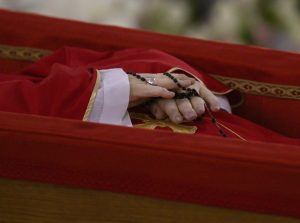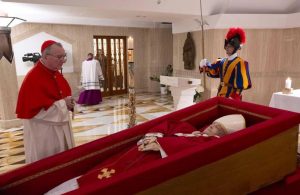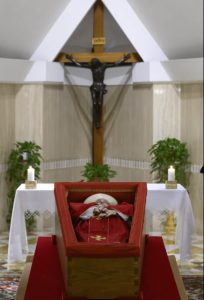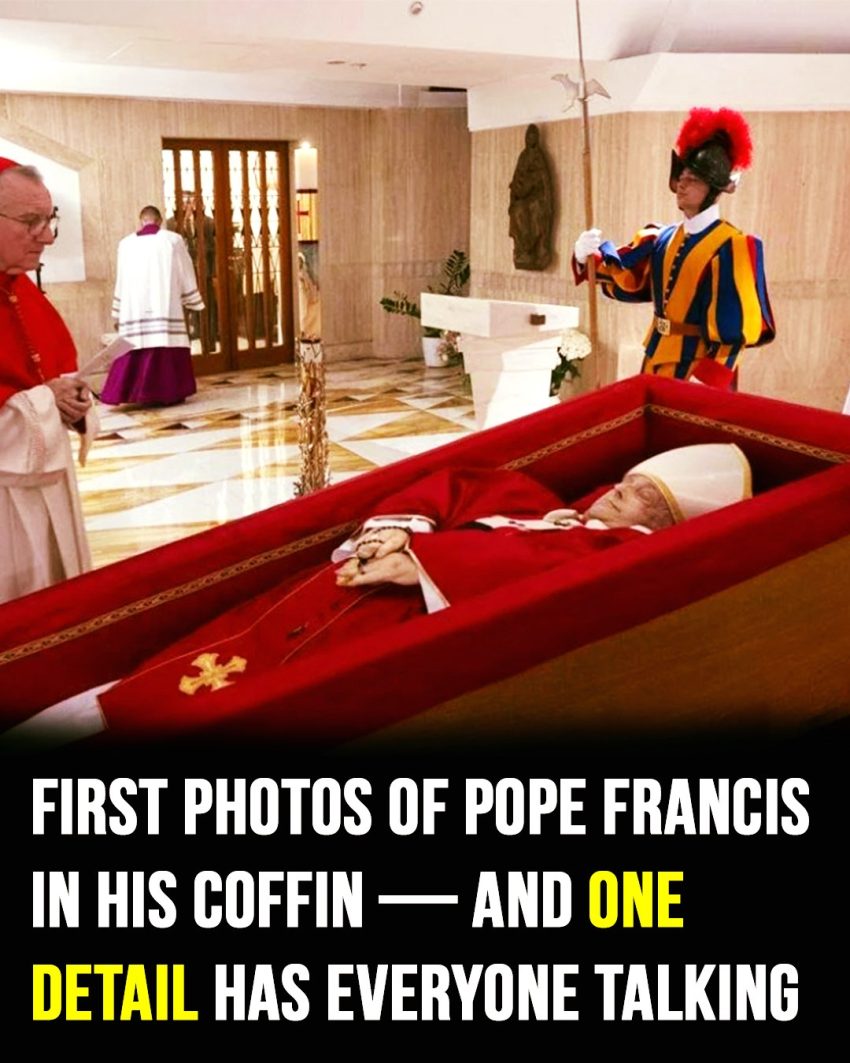The photographs of Pope Francis lying motionless in his coffin reveal far more than meets the eye, with each detail telling a tale.
From the unconventional casket to the personal things placed near his body, the late pontiff’s final resting place defies centuries of Vatican precedent – at his own request.
As the world bids Pope Francis farewell, his upcoming burial will reflect the fundamental values he championed throughout his life. Pope Francis is known for his simplicity, humility, and persistent concern for the marginalised, and his last burial place is a powerful monument to the legacy he leaves.
And the personal belongings he selected to bring with him will serve as a final remembrance of a life dedicated to service, love, and transformation.
The beloved 88-year-old pontiff died Monday after suffering a catastrophic stroke that resulted in irreparable heart failure. After weeks of fighting pneumonia, the Argentine-born spiritual leader died peacefully in the Vatican.
What’s in the Pope’s casket?
On Tuesday, the Vatican released the first dramatic photographs of Pope Francis reclining in rest. The photographs highlighted the meaningful objects he brought with him on his final journey.
His coffin, surrounded by ceremonial guards, stood silently as Vatican officials and members of his family gathered for a solemn and reverent farewell.
In the photographs posted, Francis is seen lying in an open casket draped in scarlet robes, which represent martyrdom and Christ’s blood. A rosary is softly folded in his hands.

The coffin also contains his mitre (traditional papal hat), crozier (pastoral staff), and a collection of coins created during his papacy, a centuries-old practice symbolising his time as the Vicar of Christ.
The casket also contains a rogito, a sealed legal document summarising his life and pontificate. On his right hand, the Pope wears the shattered Fisherman’s Ring, which is ceremonially destroyed before burial to mark the end of a pope’s reign.
The destruction also ensures that the ring cannot be used after the pope’s death, as it was originally created as a seal for the pope’s personal correspondence.
Look at the casket.
Pope Francis’ death signals a significant shift from long-standing papal burial traditions, as evidenced by a quick peek at his coffin.
Francis chose simplicity over the costly triple coffins composed of cypress, lead, and oak used by former popes, such as the late Pope Benedict.
His coffin is a simple timber structure lined with zinc, demonstrating his dedication to humility. The traditional papal goodbye, which involved placing the Pope’s body on a catafalque inside St. Peter’s Basilica for public mourning, has also been abandoned.

Instead, Francis’ body will rest inside the casket with the lid off, allowing mourners to pay their respects in a more intimate and personal setting.
For the first time in more than a century, a pope will be buried outside the Vatican.
Pope Francis will be laid to rest at the Basilica of Santa Maria Maggiore in Rome’s Esquilino neighbourhood, rather than in the grottoes beneath St. Peter’s, which house the tombs of over 90 popes.
When and where are the funerals?
The Vatican has confirmed that Pope Francis’ funeral will take place on Saturday, April 26 at 10 a.m. local time in St. Peter’s Square.
Following the public service, his body will be carried to the Basilica of Santa Maria Maggiore in Rome’s Esquilino neighbourhood, where Francis once expressed his desire to be placed to rest.

His remains will lie in state at St. Peter’s Basilica beginning Wednesday. As the body is carried into the basilica, the solemn chant of the Litany of Saints will fill the air, conducted by the camerlengo at the head of the procession. Cardinal Kevin Joseph Farrell, appointed by Pope Francis in 2019, now serves as the camerlengo.
In a departure from longstanding practice, Pope Francis’ remains will not be placed on an elevated bier. Instead, his plain wooden casket sits at floor level, facing the seats, with the Paschal candle nearby as a solemn symbol of faith and light.
As the world mourns Pope Francis’ death, it is the subtle, personal elements that stand out the most, from his humble wooden casket to the simple ceremony.
In death, like in life, he chose simplicity, kindness, and a break with tradition. And those decisions may define his legacy more than any spectacular procession ever could.
